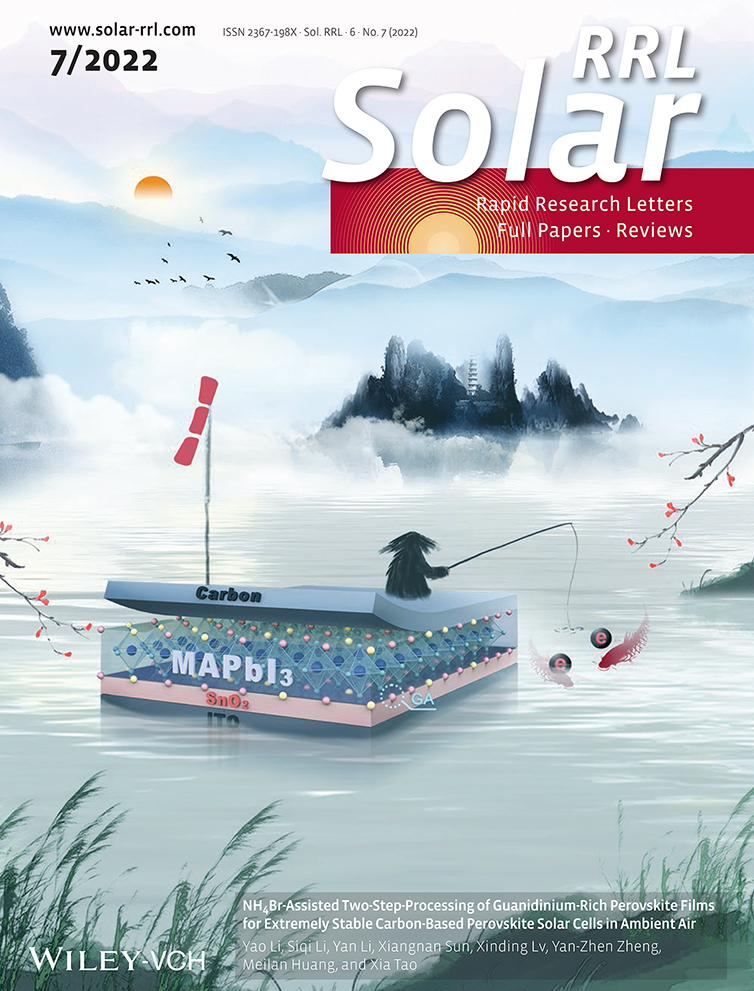Realization of High-Voltage Output on Monolithic Silicon Solar Cells in Series for Self-Powered Systems
Abstract
Crystalline silicon solar cells dominate the photovoltaic market nowadays. However, they are rarely used in self-powered systems (with an operating voltage of 1.5∼12.0 V) mainly because of the low integration of silicon solar cell modules, which need slicing and then series connection. Herein, a series-interconnected solar cell which can be prepared on a monolithic silicon wafer, with the capability to output high voltage by controlling the number of sub-cells, is proposed. Further, based on a technology computer aided design (TCAD) numerical simulation, an in-depth analysis of an unconventional non-shunt resistance type of leakage mechanism under electric and light injection which has not been reported before is proposed and performed, finding that the leakage current can be divided into three stages that are closely related to the variation in the conductivity (resistance) of the transition region (TR) under injection conditions. Then, several targeted methods especially an unusual method of increasing the recombination to constrain the rise in conductivity in TR are proposed to improve its efficiency by suppressing leakage current at different stages. Finally, simulation reveals that the proposed monolithic on-chip solar micromodules enable not only high voltage but also high efficiency (≥24.0%), which well meets the requirements of self-powered systems at low cost.
Conflict of Interest
The authors declare no conflict of interest.
Open Research
Data Availability Statement
The data that support the findings of this study are available from the corresponding author upon reasonable request.




